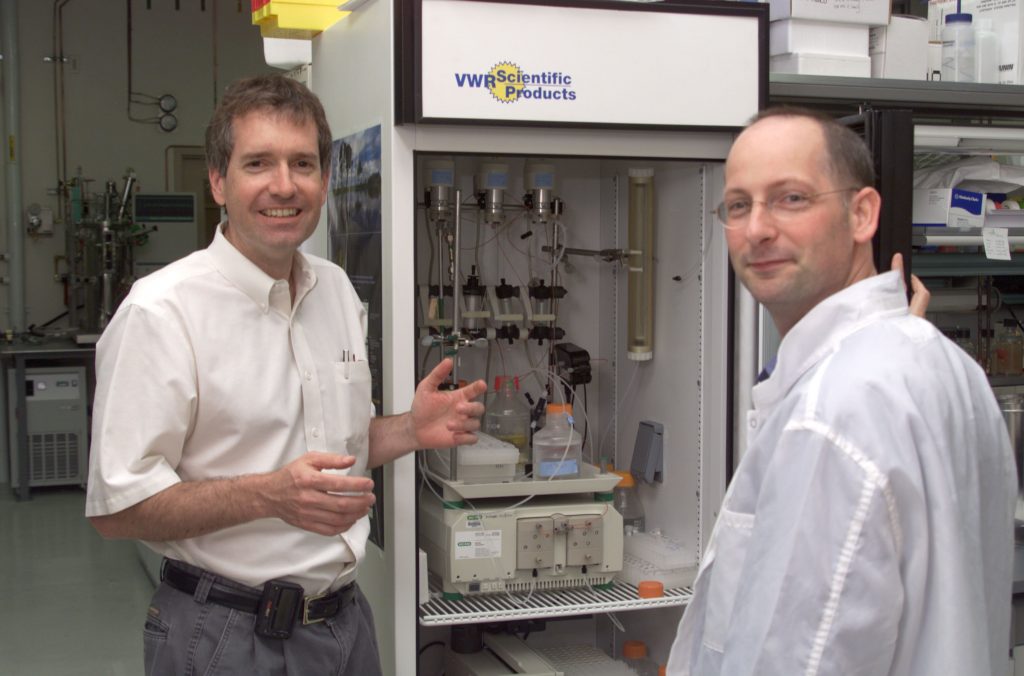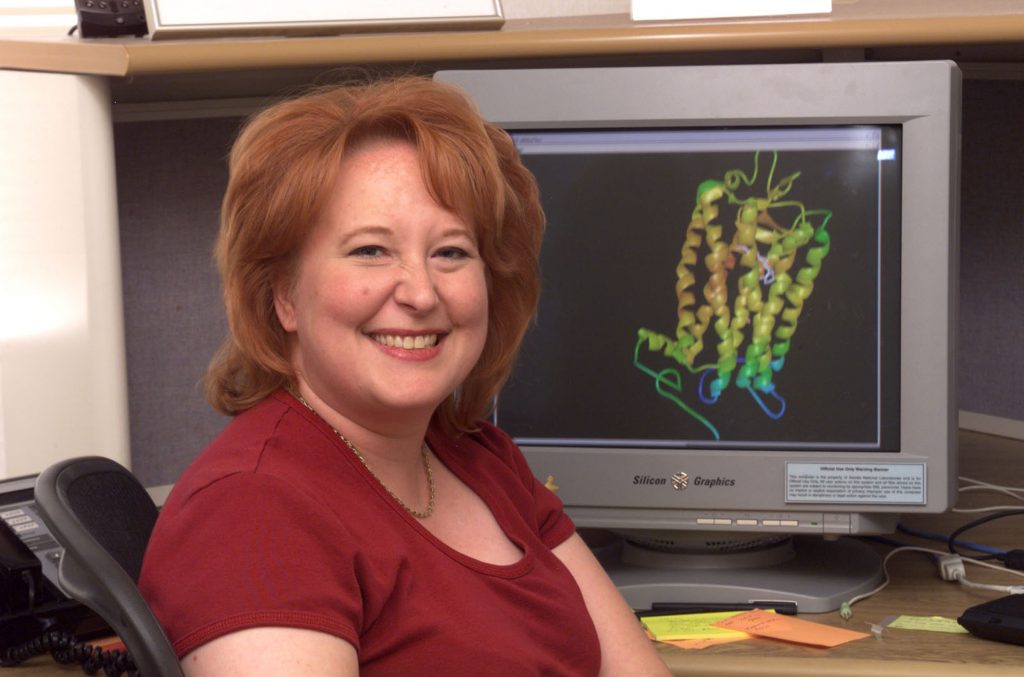
ALBUQUERQUE, N.M. — A team of about 30 scientists from Sandia National Laboratories in New Mexico and California are striving to better comprehend communication across cell membranes via protein interactions. This is the kind of knowledge needed to develop new methods to detect biological agents or to create drugs that will block the agents.
The research project — Interfacial Bioscience Grand Challenge (IBIG) — is part of a two-year-old internally funded Laboratory Directed Research and Development (LDRD) Grand Challenge.
“If you go after a difficult problem, you might as well go after an important difficult problem,” said Sandia National Laboratories researcher Joe Schoeniger, principal investigator of the IBIG Grand Challenge. Len Napolitano is project manager.
In particular, the IBIG project team is trying to understand the mechanisms of “signaling and intoxication” through which biological agents, such as anthrax or botulism, might enter a body’s cells and try to kill them, or interfere with the body’s internal signaling systems agents.
The cell membrane is a water-insoluble lipid bilayer surrounding a cell, studded with membrane proteins (MPs) that control what goes in or out of the cell. In order for a bacterial toxin to penetrate an MP, it must first bind to a receptor on the cell membrane. A pore is then created through which the toxic agent migrates into the cell.
“Because deadly biological agents enter cells in this fashion, finding a way to obstruct their entry would have a large scientific impact,” said Napolitano. “It would be a significant contribution to biomedicine and could be an important bioterrorism countermeasure.”
At the heart of the project is development of unique experimental and computational capabilities for understanding membrane protein structure. The challenge is to integrate a core of technologies that can provide structural and functional information about membrane systems at the molecular level. Such technologies include methods for determining protein structure using mass spectrometry; a suite of novel scanning probe microscopes; and state-of-the-art membrane-simulation capabilities using massively parallel computers.
“The completion of the human genome project has created a unique opportunity for breakthrough technologies with broad impact in chem/bio defense and healthcare,” Napolitano said. “Based on Sandia’s existing capabilities in bioanalytical technology, computer science and surface science, this project is directed to developing new technologies for analyzing the interactions of cell membrane systems which should catalyze a similar leap forward, creating a unique niche for Sandia in biotechnology.”
As part of the Grand Challenge, the researchers ask three key scientific questions: What is the structure of the membrane protein when it is situated in the membrane? How does the structure change in response to a signal or an intoxicating agent? How does this structure change the function of the protein?

Three technical cores
To answer these questions, the IBIG project was organized with three technical cores, including imaging, structure, and simulation.
The imaging core team uses scanning probe microscopy and single-molecule biophysical measurement to connect structural changes with function.
The structure core is based on a new technology for determining protein structure originally developed by Sandia/California researcher Malin Young and her collaborators at the University of California/San Francisco, the Buck Institute and Chiron Corporation. It uses protein chemistry and mass spectrometry methods to obtain structural information about protein molecules in different functional states.
The simulation core provides computational tools to build protein structure/function models and test underlying assumptions.
Napolitano said that during 2001, the first year of the Grand Challenge, the IBIG project made significant progress toward both the experimental and computational goals.
Accomplishments
One of the major accomplishments was implementation of an automated experimental and data analysis pipeline that will determine intra-atomic distances in membrane proteins. This was done through the use of chemical crosslinkers and Fourier Transform Ion Cyclotron Resonance Mass Spectrometry (FTICR/MS). These crosslinkers consist of two reactive groups joined by a linker arm of a certain length, and are used kind of like a molecular caliper. The end groups can react with certain amino acid residues on the protein, but only if these residues are the right distance apart.
Modern ultrasensitive, high-resolution mass spectrometry can determine, in hindsight, which residues were linked, and therefore how far apart they are. Different crosslinkers are used to determine the range of distances between different residues on the protein.
Napolitano added that this is an entirely new methodology that has only been made possible in the past couple of years through advances in mass spectrometry and data analysis.
“Using the unique capabilities of FTICR/MS, we can ionize and fragment the whole protein to find out what parts are crosslinked to, and thus close to, other parts,” Napolitano said. “Or we can first cut up the crosslinked protein into small peptide segments using chemicals or enzymes and analyze the peptides in more detail.”
The team has also written specialized software to determine all membrane structures compatible with a given set of constraints. This allows using crosslinking-based information to build structure models, allowing further experimental refinement.
Also, a state-of-the-art computer code simulates the molecular dynamics and energetics of membrane proteins. Called LAMPPS, it is used with the Sandia’s C-plant massively parallel computer. Running on 100 processors, it can simulate one nanosecond of protein motion per day. With access to Sandia’s supercomputing resources, this would enable world-record simulations for membrane protein ensembles of about 40,000 atoms. Simulation time scales on the order of 100 nanoseconds, combined with nonequilibrium simulation techniques, will allow a whole new range of biophysical problems to be addressed, such as the significant changes in structure related to signaling.
The progress was noted recently by an external advisory committee, composed of bioscientists from universities and the National Institutes of Health (NIH), that reviewed the IBIG Grand Challenge. In a report, the committee said the project was “very possible, very powerful, unique.”
“No one else in the world has assembled the team and resources you have here and focused these on the highly compelling and daunting challenge of membrane proteins,” the committee said. “You have huge potential for significant payoff and recognition, especially in the application of mass spectrometry and chemical crosslinking to membrane structure determination. If you reach your goals, Sandia National Labs will be the definitive cutting edge in a tremendously important area of bioscience.”